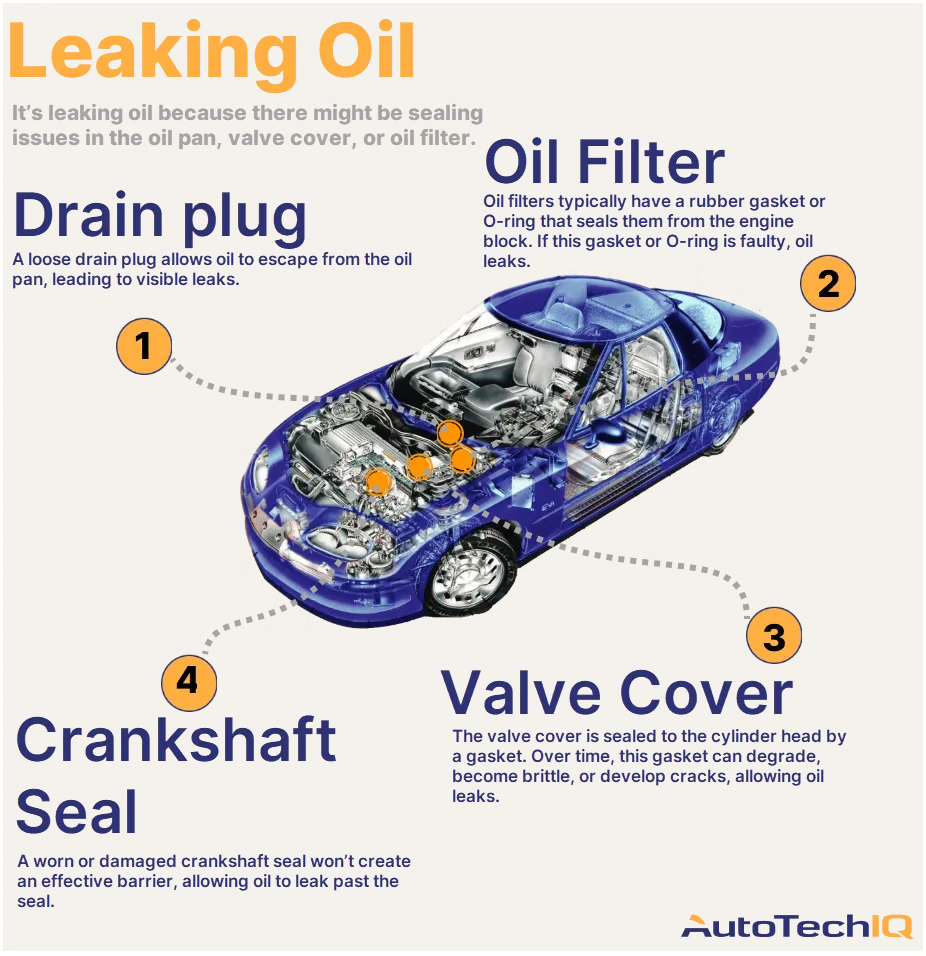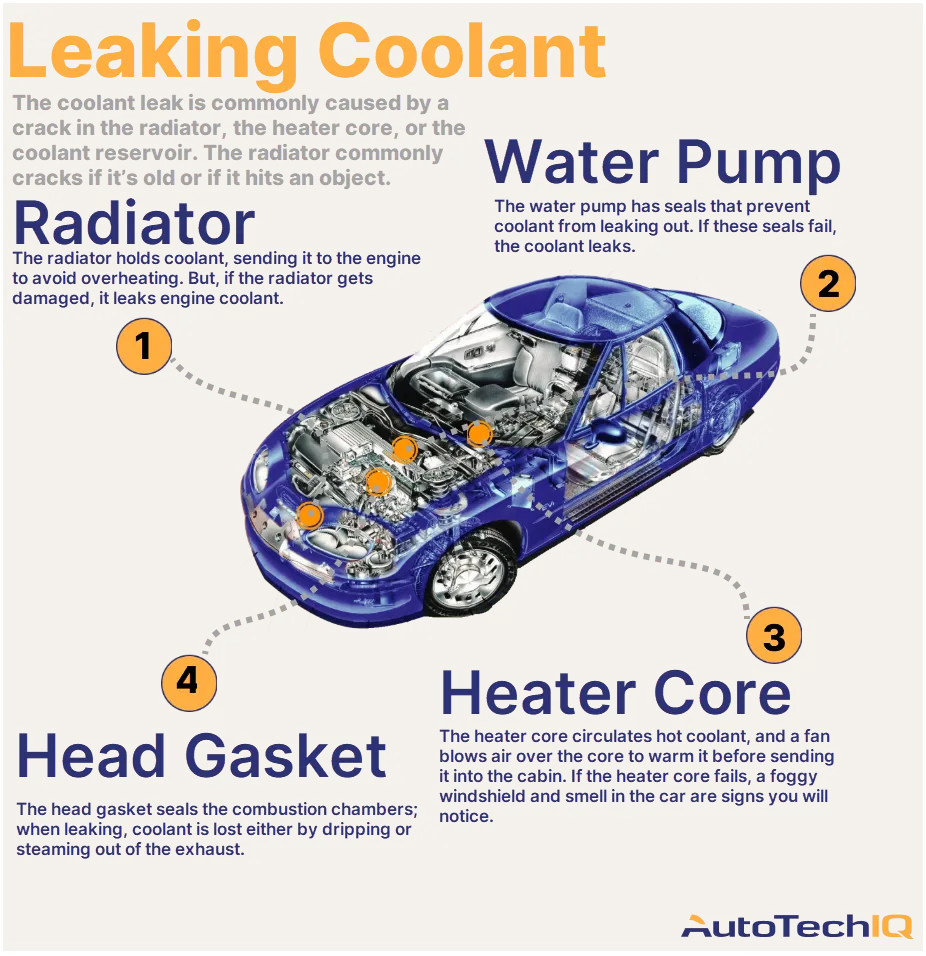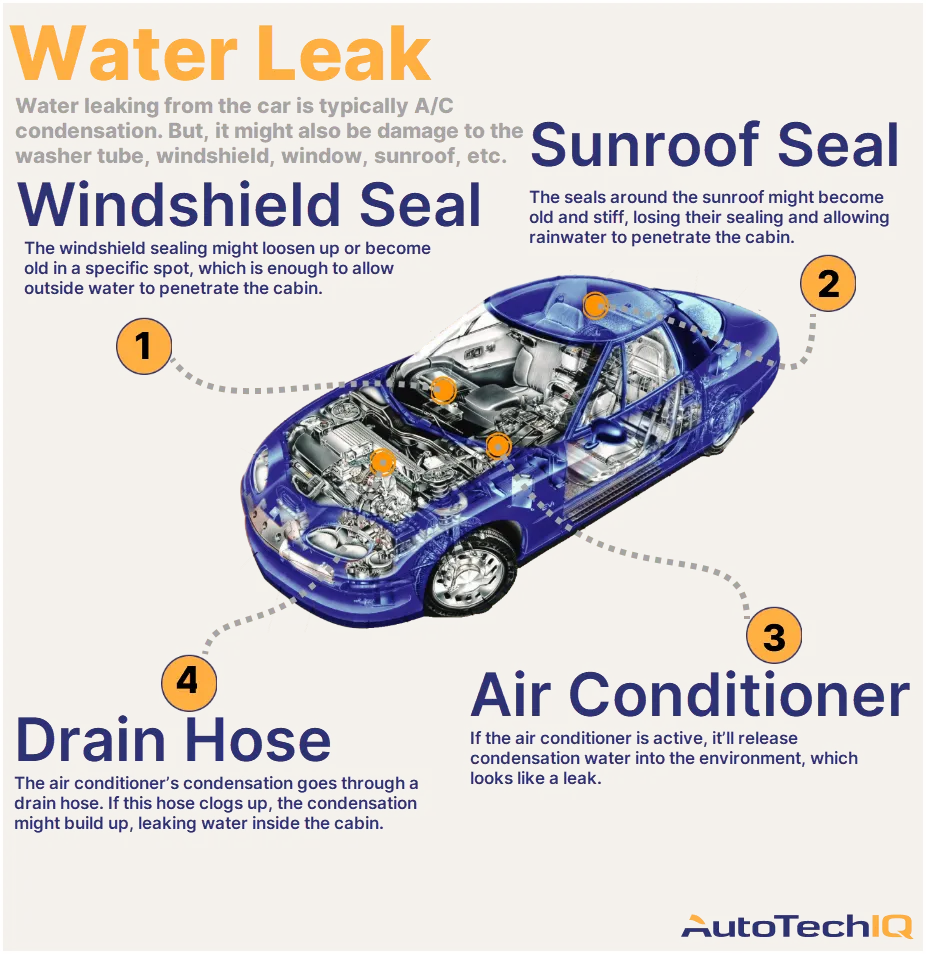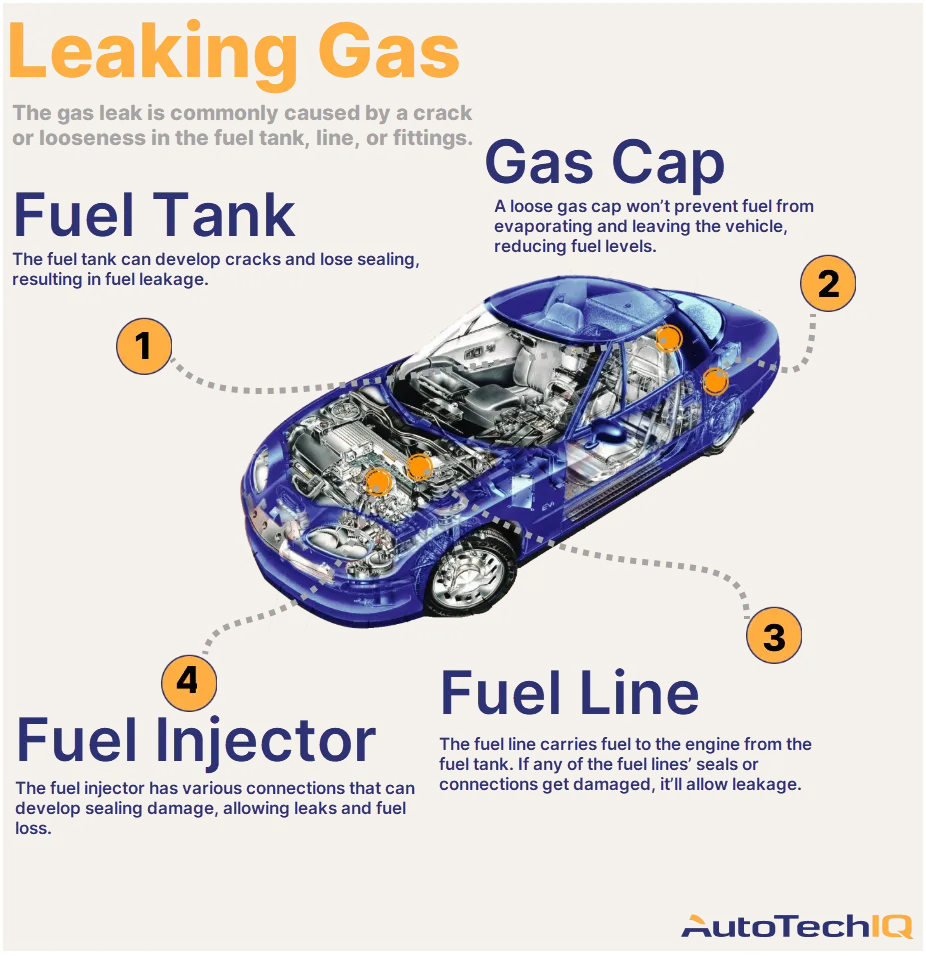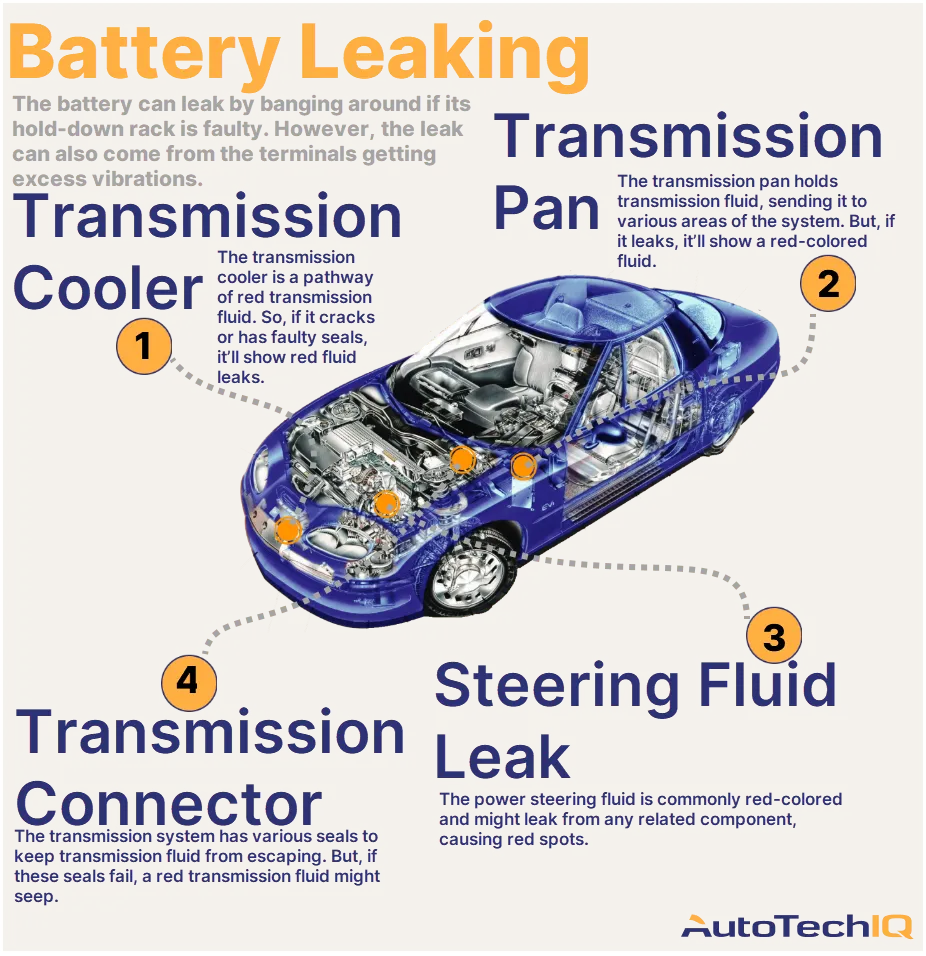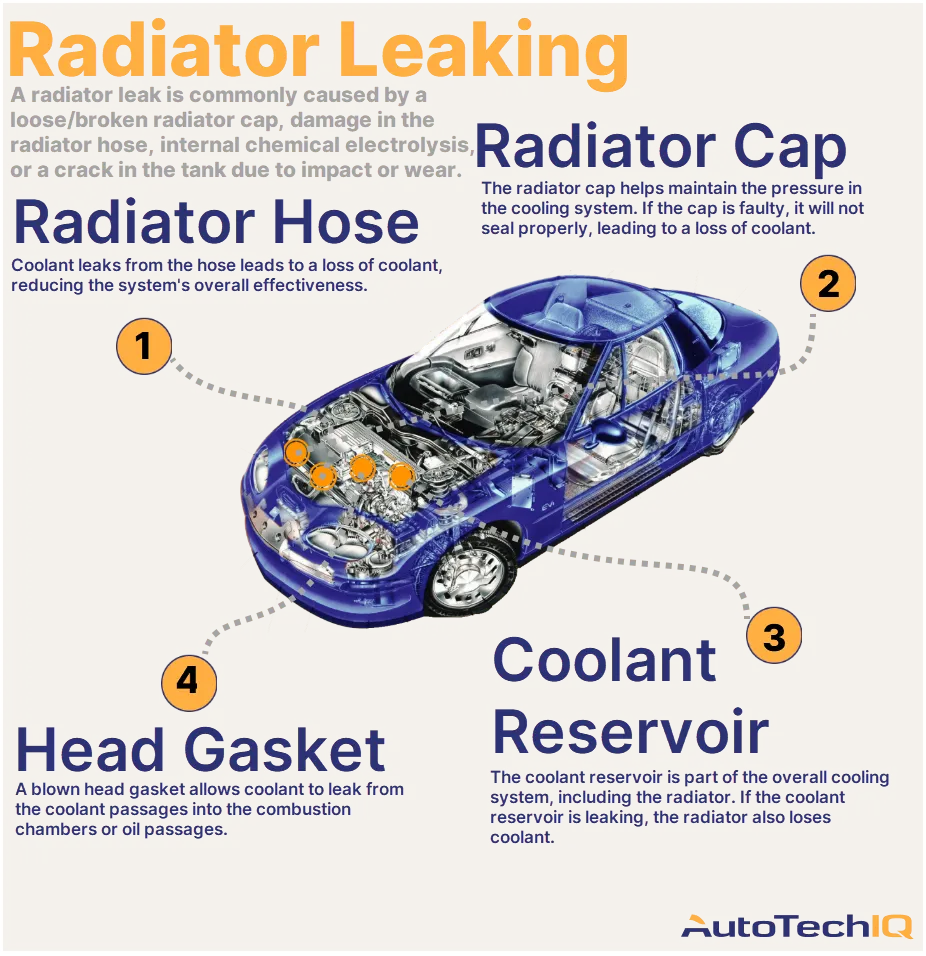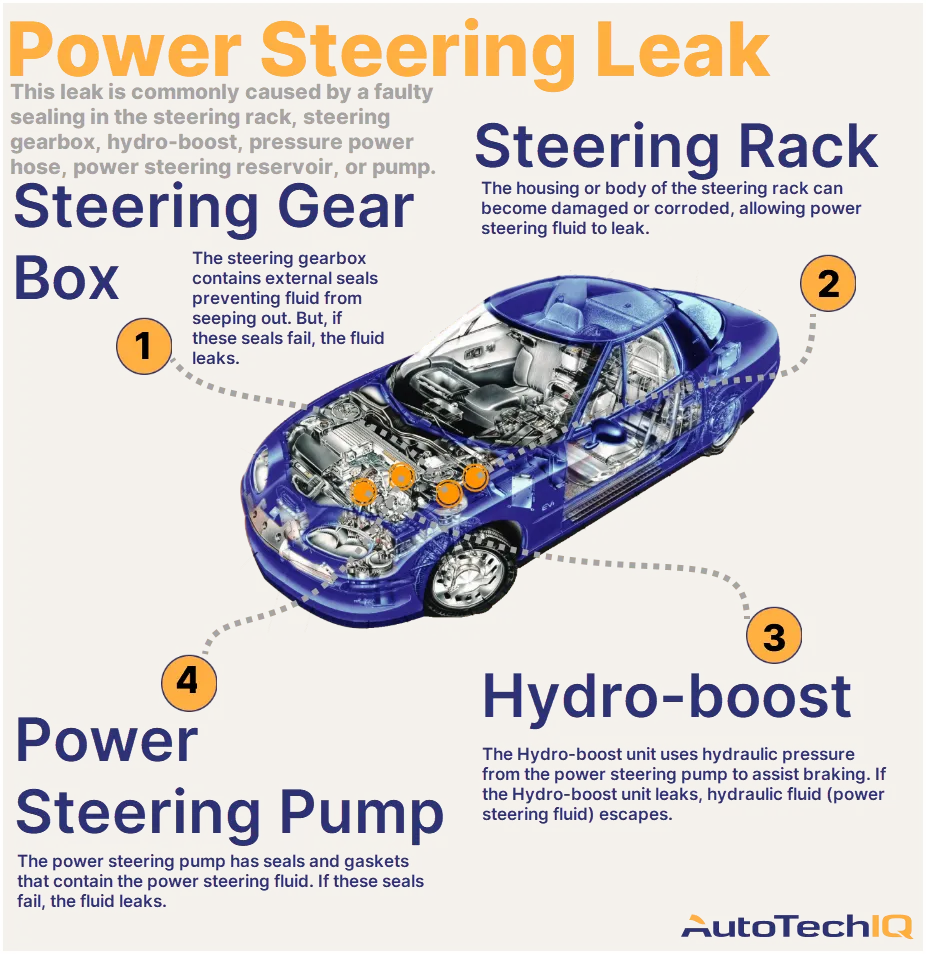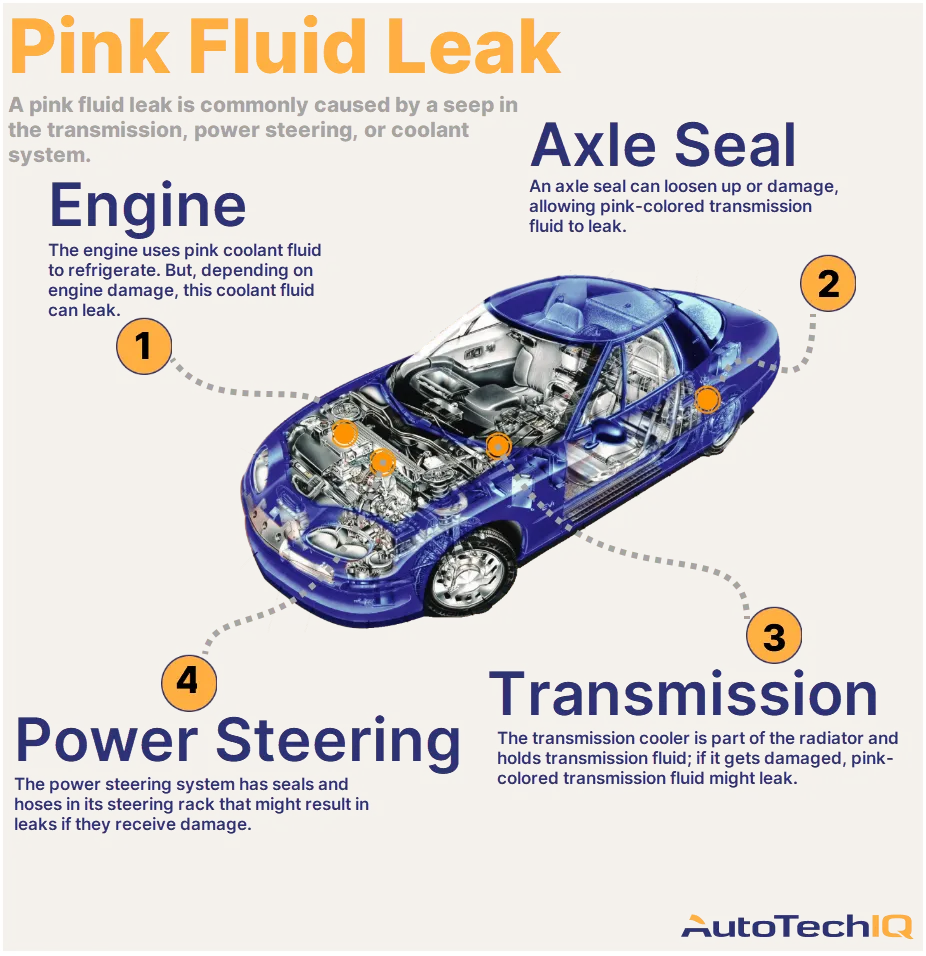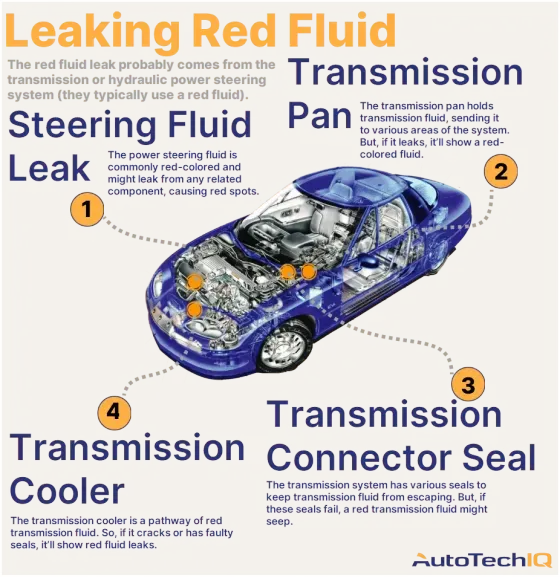
Is Your Car Leaking Red Fluid?
The red fluid leak probably comes from the transmission or hydraulic power steering system (they typically use a red fluid). In this case, it can come from a leak in the transmission pan, cooler, wire connector seal, output shaft seal, or cooler lines. Less often, it can be related to a power steering fluid leak.
Some vehicle fluids are red-colored. Therefore, they're easier to identify when leaking. Red fluid leaking from a vehicle usually comes from either the power steering system or the transmission. Note that responding to leaks quickly is essential. If fluids run dry, your vehicle will be at risk.
Transmission fluid leaks happen more often. This is because this system has connections and seals prone to leaking. Plus, your transmission pan is at the bottom of your vehicle and is vulnerable to being damaged by objects on the road.
Watch out: You use the steering and shifting systems to control your vehicle. If these systems are compromised, driving becomes dangerous. Any leaks in these systems create red puddles under the car and result in trouble turning or shifting gears.

